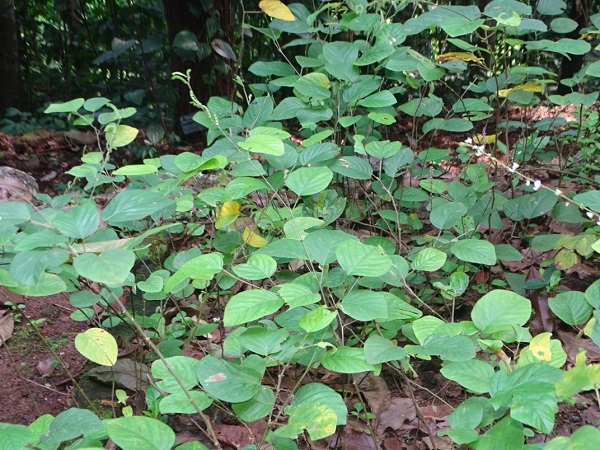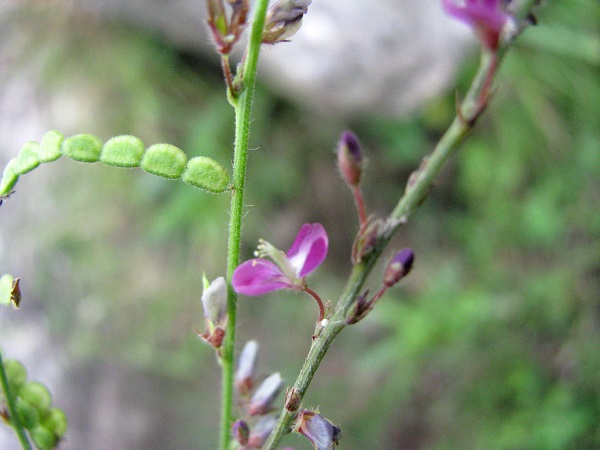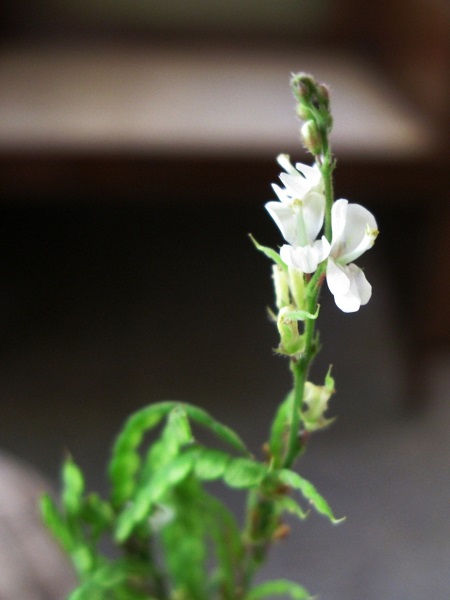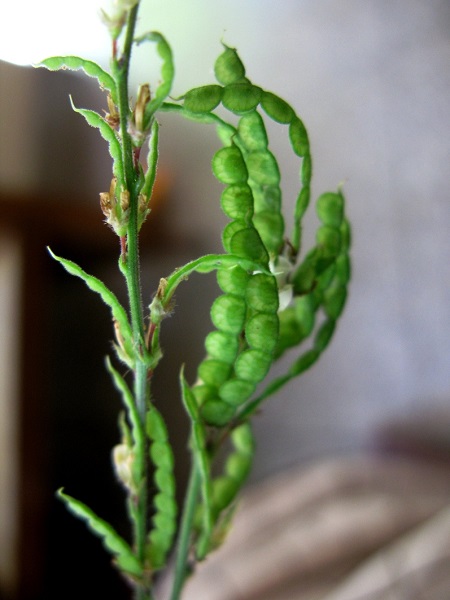
| Family | Fabaceae |
| English Name | Sal Leaved Desmodium |
| Malayalam Name | Orila, Pullati |
| Tamil Name | Orilai |
| Kannada Name | Muruluboane |
| Telugu Name | Gitanaramu |
| Hindi Name | Dhruva, Pivari, Shalparni |
| Sanskrit Name | Anshumati, Dirghamoola |
| Trade Name | Sarivan |
| Part Used | Dried roots and Whole plant |
| In Wild | Yes |
| Under Cultivation | Yes |
| Temperature | 25 - 30°C ±3 |
| Rainfall | 875 mm |
| Farmers | NA |
| Traders | NA |
| Institution | NA |
| Individually | NA |
| State/Region | NA |
| District | NA |
| Nursery Information | NA |
| Yield | The total herb yield per hectare is estimated to be 5 to 5.5 tonns dry weight, while the dry weight yield of roots is estimated to be 1.1 to 1.5 tonnns/hectare. |
| Economic of cultivation | The approximate cost of cultivating 1 hectare of land is Rs 45 000. |
| Quantitative quality standards | a. Foreign matter (other plant parts, soil, stone, sand, dust, organisms and their parts): Nil (w/w). b. Ash: Not more than 3.5 percent (w/w). c. Acid-insoluble ash: Not more than 1.0 percent (w/v). d. Ethanol-soluble extractives: Not less than 2.0 percent. (w/v). e. Water-soluble extractive: Not less than 4.0 percent (w/v). |
| Description | NA |
| Agro technology/Cultivation practices | Agro-ecological requirements It grows well in partial shade in moist localities on loam to clay loam soil, with pH 8.5–9.0 (alkaline).It can also thrive well in heavy soils with high clay content. Seed propagation : The crop can be raised easily through seeds, which germinate without any pretreatment. Seeds are collected during July–August and October– November. The collected seeds retain their viability for three years under normal storage conditions. The seedlings can be raised from seeds in the nursery in March–April. Seeds are sown in polybags with a potting mix containing equal amounts of soil, sand, and FYM (farmyard manure). The seeds germinate in about 7–10 days and the seedlings are ready for transplanting in the main field after 45–50 days. Seeds planted directly in the field produce uneven or dense crop stand. Approximately, 3–4.5 kg seeds are needed for raising about 50000 seedlings for 1 hectare plantation. Field planting : The field should be prepared well by giving one ploughing and two harrowings, followed by planking. Transplantation in irrigated farms can be done after seedlings attain 45 days of age. If dry conditions prevail, transplantation may be delayed till early July under rain-fed conditions. An optimum spacing of 45 cm × 45 cm is recommended, which can accommodate approximately 50 000 saplings in 1 hectare of land. For intercropping with widely spaced main crops such as aonla, planting can be done in two adjacent rows at a spacing of 30 cm × 30 cm Manuring/Fertilization : All manures and fertilizers are applied just before transplantation while preparing the land. Manure at the rate of 10 tonnes/hectare should be mixed thoroughly with the soil at the time of field preparation. Irrigation : First irrigation is essential just after transplanting, followed by irrigation at an interval of 12–15 days in summers (May– June). During monsoon, irrigation can be done depending on the rains received. In rain-fed conditions, irrigation depends upon the amount and frequency of rainfall. Irrigation once a month during winter season is sufficient. Pest and diseases: No serious disease or insect pests have been observed. The roots of plantations older than one year are often severely damaged by rats in some dry regions. The rodents may be controlled by standard control measures. |
| Harversting | The plants mature in six to seven months by November–December, and may be harvested as whole plants. If root is required for medicinal purpose, the plant may be allowed to stand for one year and harvesting may be done in April. One-year old crop produces higher root yield. Irrigation is withheld three weeks before harvesting. The whole plant is dug out with spade and roots are separated. |
| Processing | The collected produce(roots/whole plant) is washed, cleaned, and dried in shade. The dried produce is packed in gunny bags and stored under humidity-free conditions. |
| References | NA |



